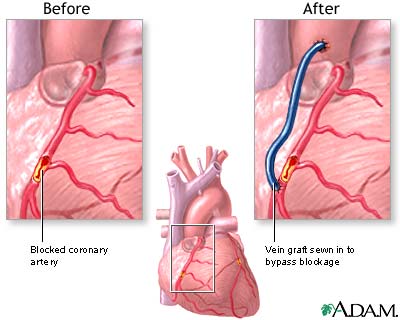
Oats (Super Foods!)
[media id=29 width=500 height=400]
The common oat (Avena sativa) is a species of cereal grain grown for its seed, which is known by the same name (usually in the plural, unlike other grains). While oats are suitable for human consumption as oatmeal and rolled oats, one of the most common uses is as livestock feed. Oats make up a large part of the diet of horses and are regularly fed to cattle as well. Oats are also used in some brands of dog and chicken feed.
Uses
Oats have numerous uses in food; most commonly, they are rolled or crushed into oatmeal, or ground into fine oat flour. Oatmeal is chiefly eaten as porridge, but may also be used in a variety of baked goods, such as oatcakes, oatmeal cookies, and oat bread. Oats are also an ingredient in many cold cereals, in particular muesli and granola. Oats may also be consumed raw, and cookies with raw oats are becoming popular.
Oats are also occasionally used in several different drinks. In Britain, it is used for brewing beer. Oatmeal stout is one variety brewed using a percentage of oats for the wort. The more rarely used Oat Malt is produced by the Thomas Fawcett & Sons Maltings and was used in the Maclay Oat Malt Stout before Maclay ceased independent brewing operations. A cold, sweet drink made of ground oats and milk is a popular refreshment throughout Latin America. Oatmeal caudle, made of ale and oatmeal with spices was a traditional British drink and a favorite of Oliver Cromwell.
In Scotland a dish called Sowans was made by soaking the husks from oats for a week so that the fine, floury part of the meal remained as sediment to be strained off, boiled and eaten (Gauldie 1981). Oats are also widely used there as a thickener in soups, as barley or rice might be used in other countries.
Oats are also commonly used as feed for horses – as plain whole or rolled oats or as part of a blended food pellet. Cattle are also fed oats, either whole, or ground into a coarse flour using a roller mill, burr mill, or hammer mill.
Soluble fiber
Oat bran is the outer casing of the oat. Its consumption is believed to lower LDL (“bad”) cholesterol, and possibly to reduce the risk of heart disease.
Oats contain more soluble fiber than any other grain, resulting in slower digestion and an extended sensation of fullness. One type of soluble fibre, beta-glucans, has proven to help lower cholesterol.
After reports of research finding that dietary oats can help lower cholesterol, an “oat bran craze” swept the U.S. in the late 1980s, peaking in 1989, when potato chips with added oat bran were marketed. The food fad was short-lived and faded by the early 1990s. The popularity of oatmeal and other oat products again increased after the January 1998 decision by the Food and Drug Administration (FDA) when it issued its final rule allowing a health claim to be made on the labels of foods containing soluble fiber from whole oats (oat bran, oat flour and rolled oats), noting that 3.00 grams of soluble fiber daily from these foods, in conjunction with a diet low in saturated fat, cholesterol, and fat may reduce the risk of heart disease. In order to qualify for the health claim, the whole oat-containing food must provide at least 0.75 grams of soluble fiber per serving. The soluble fiber in whole oats comprises a class of polysaccharidesBeta-D-glucan. known as
Beta-D-glucans, usually referred to as beta-glucans, comprise a class of non-digestible polysaccharides widely found in nature in sources such as grains, barley, yeast, bacteria, algae and mushrooms. In oats, barley and other cereal grains, they are located primarily in the endosperm cell wall.barley, yeast, bacteria, algae and mushrooms. In oats, barley and other cereal grains, they are located primarily in the endosperm cell wall.
Health
Oats are generally considered “healthy”, or a health food, being touted commercially as nutritious. The discovery of the healthy cholesterol-lowering properties has led to wider appreciation of oats as human food.
Protein
Oat is the only cereal containing a globulin or legume-like protein, avenalin, as the major (80%) storage protein. Globulins are characterized by water solubility; because of this property, oats may be turned into milk but not into bread. The more typical cereal proteins such as gluten and zein are prolamines (prolamins). The minor protein of oat is a prolamine; avenin.
Oat protein is nearly equivalent in quality to soy protein, which has been shown by the World Health Organization to be equal to meat, milk, and egg protein The protein content of the hull-less oat kernel (groat) ranges from 12–24%, the highest among cereals.
Oats , Oats Health, Oats Health Latest, Oats Health Information, Oats Health information, Oats Health Photo,Oats Health photo, Oats Health Latest, Oats Health latest, Oats Health Story, Healthy Minnesota Health story, Oats Video, Oats video, Oats Health History, Oats Health history, Oats over Picture, history, Oats Asia, Healthy Minnesota asia, Oats Gallery, Oats gallery, Oats Photo Gallery, Healthy Minnesota photo gallery, Oats Picture, Oats picture, Oats Web, Malaysia Health, web Health, picture, video photo, video surgery, gallery, laparoscopy, virus, flu, drug, video, Health Health, photo, nutrition, health video, symptoms, cancer, medical, beating, diet, organic, blister, exercise, weightloss, surgery, spiritual, Oats, tips, operation, bf1, oat, oats, fiber, immune , cold, flu, diabetes, prevention, nutrition, diet, eat, eating, heart, cook, cooking, sugar, quaker, body, fit, dr medicine, health, athletics, advice, video, blog, beauty, drink, fitness, food, gardening





